NSU Press Publications
These are current titles available for purchase. Click on the book titles for a description of each individual book.
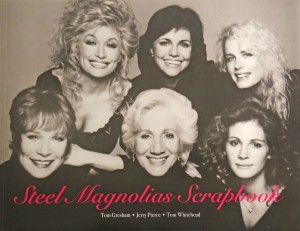 Steel Magnolias Scrapbook – Memories of Movie Making in a Small Town 4th Edition
Steel Magnolias Scrapbook – Memories of Movie Making in a Small Town 4th Edition
Tom Gresham, Jerry Pierce, Tom Whitehead
144 pages + Cover
10-7/8 x 8-1/4 inches
ISBN 0-917898-16-8
Retail Price: $30 + $3 S&H
Contact: NSU Press Publications
(318) 357-4553
jacksonl@nsula.edu
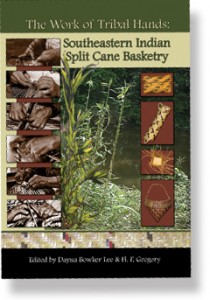 The Work of Tribal Hands: Southeastern Indian Split Cane Basketry
The Work of Tribal Hands: Southeastern Indian Split Cane Basketry
Edited by Dayna Bowker & H.F. Gregory
240 pages with 139 color pictures
7 x 10 Perfect Bound
ISBN: 978-0-917898-27-3
Retail price: $30 + $3 S&H
Contact: NSU Press Publications
(318) 357-4553
jacksonl@nsula.edu
In May 2002, a unique conclave of Southeastern Indian basketmakers gathered at Northwestern State University in Natchitoches, Louisiana. This gathering was the first intertribal basketry workshop/ discussion group that directly addressed issues of Southeastern Indian basketry and basket weavers. It became obvious from the onset that many styles, forms, and techniques, and a wide variety of raw materials, could be found in southeastern basketry traditions. What seemed most ancient, most indigenous, to Southeastern Indian people was the use of river cane and the weaving of split cane basketry. It seemed in order, after hearing the weavers address concerns and discuss traditions, that cane basketry be the focus of a collection of papers dedicated to a variety of related issues.
To make the present work relevant to a wide audience, particularly to the weavers themselves, we tried to balance historic perspective with contemporary concerns. We asked people from within tribal traditions or those who had long connections to Southeastern Indian arts and crafts—including people from different marketing venues—to write about aspects of cane basketry. This volume speaks to the ancient, the new, and the continuation of the art of split cane basketry. It is apparent from these essays that all the doomsayers who have gloomily predicted the demise of the baskets and their weavers are wrong—a happy message for this work. Southeastern Indian weavers may adapt and innovate; but clearly, the underlying traditions remain strong.
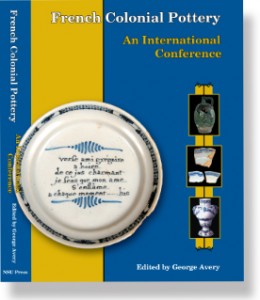 French Colonial Pottery: An International Conference
French Colonial Pottery: An International Conference
Edited by George Avery
504 pages with 400 color plates
7.75 x 10.5 Perfect Bound
ISBN: 978-0-917898-29-7
Retail price: $75 + $8 S&H
Contact: NSU Press Publications
(318) 357-4553
jacksonl@nsula.edu
This book consists of fourteen chapters with presentations and discussions of French colonial pottery from Louisiana, Illinois, Alabama, Arkansas, Texas, the St. Lawrence Valley, Fortress Louisbourg, and France. The first chapter presents the perspectives of Earl Barbry Jr. of the Tunica-Biloxi Tribe of Louisiana on his experiences with the Tunica “Treasure,” along with color photographs of most of the French pottery from the Tunica collection. Authors of the following chapters include John Walthall, Gregory Waselkov, Edward Jelks, Marcel Mousette, Ives Monette, Marc Richer-LaFlèche, Henri Amouric, Lucy Vallauri, James Bruseth, Jeff Durst, Kathleen Gilmore, Nancy Reese, Shawn Carlson, John House, Aubra Lee, George Avery, Pete Gregory, Jason Emery, and Jeffrey Girard.
It is hoped that this volume will serve as a focal point for further discussions of classifying French colonial pottery.
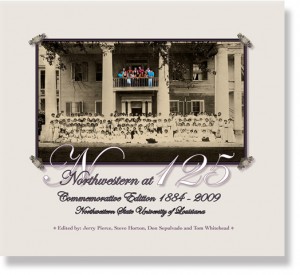 Northwestern at 125: Commemorative Edition 1884-2009
Northwestern at 125: Commemorative Edition 1884-2009
Edited by Jerry Pierce, Steve Horton, Don Sepulvado and Tom Whitehead
186 pages with over 700 photos
12 x 10.5 Hard Cover & Dust Jacket
ISBN: 978-0-917898-30-3
Retail price: $50 + $10 S&H
Contact: NSU Press
(318) 357-4553
jacksonl@nsula.edu.
Northwestern has created a coffee table book celebrating its 125th anniversary. It contains 200 pages and more than 700 photographs from the university’s archives, documenting the school’s history through the decades. Sections include academics, student life, sports and campus views.
Each book sold will help support Northwestern and its many programs.
Copies of the book are available from the Alumni and Development Office. Contact them at (318) 357-4414.
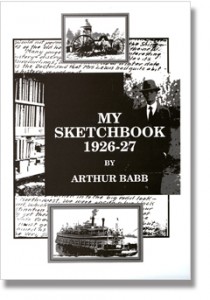 My Sketchbook 1926-27: Memoirs of Natchitoches and Plaquemine, Louisiana
My Sketchbook 1926-27: Memoirs of Natchitoches and Plaquemine, Louisiana
By Arthur Babb
Edited by Neill Cameron
112 pages with 131 photos
7 X 10 Perfect Bound
ISBN: 978-0-917898-19-8
Retail price: $15 + $3 S&H
Contact: NSU Press Publications
(318) 357-4553
jacksonl@nsula.edu
Arthur Babb’s existence might have gone unnoticed except for his capacity to record virtually everything he did. Born October 31, 1865 in Fairfield, Texas (about 85 miles south southeast of Dallas) he grew up almost entirely self-taught and from an early age liked to draw and to write.
From the late 1880s he did railroad work and for about fifty years was associated with the San Antonio and Aransas Pass railroad, the H. T. and C., and finally The Texas-Pacific. In a 1940 feature article in The Dallas Morning News the famed columnist Paul Crume said Babb as an architect had designed “some of the finest homes to be built in the Park Cities (then a suburb of Dallas) area.” It was this innate ability to write and to draw which no doubt secured his job with the Texas-Pacific Railroad, as “an evaluator of properties.” He would sketch existing T-P properties and subsequently went on to draw plans for construction jobs. Thus, he quickly rose to the post of supervisor of construction for the railroad and it was in this capacity that he came to Plaquemines, Louisiana in 1926 to build a new depot.
Within a year he moved on to Natchitoches to build the depot which still stands between Sixth Street and Martin Luther King Drive. While residing in Louisiana Babb acted out the role of animated and inquisitive tourist, taking “kodak” pictures and recording his sojourns about the Louisiana countryside in his diary which later he named his “Sketchbook,” meaning to write out, rather than to draw, his impressions of people and places. Approximately the first third of the book is taken up with Babb’s travels and descriptions of the people and the environs of Plaquemines, Louisiana, whence he was sent by the Texas and Pacific.
“My Sketchbook” is not, however, history writ large; it is a small work, with perhaps nothing more than a regional interest to recommend it to the reading public. But it fits into a greater piece of history, that of Louisiana itself, and so makes it worthy of recognition. Babb retired from the railroad service about 1930-31, and spent most of the rest of his life in and around Dallas, trying to earn a living from his drawings and bookbinding skills.
